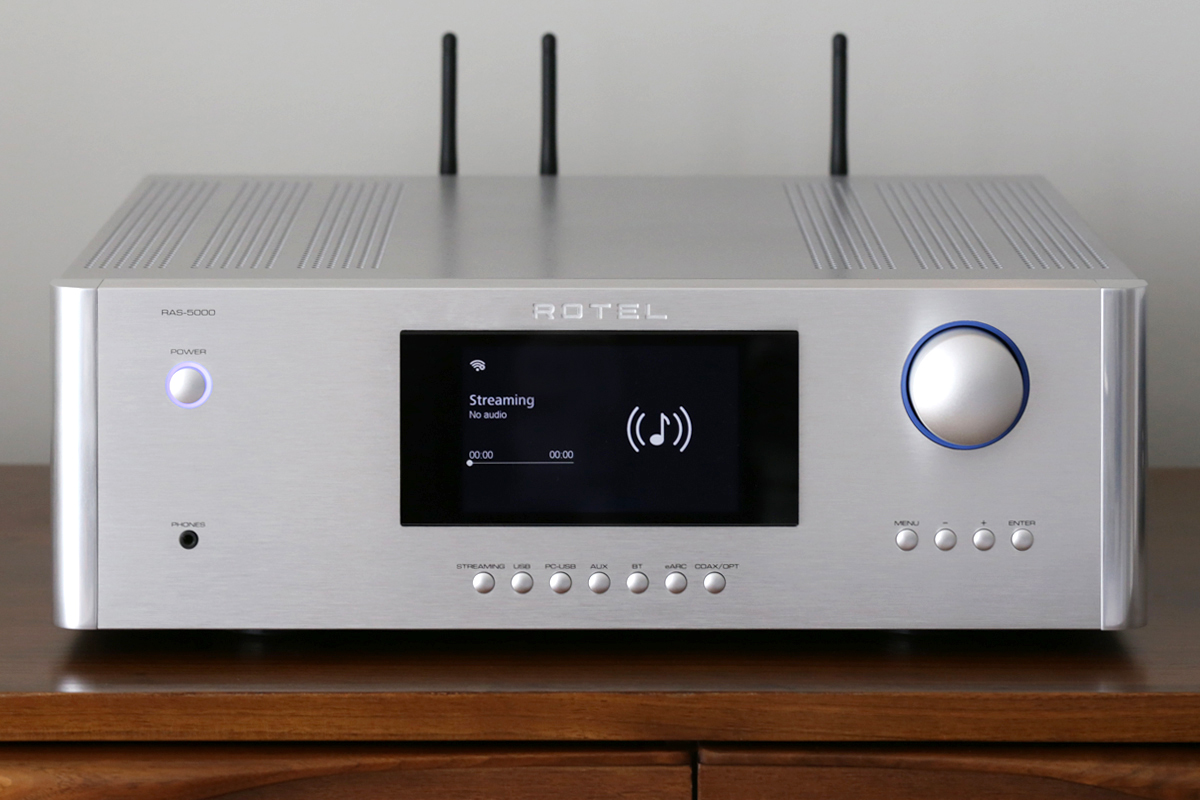Note: for the full suite of measurements from the SoundStage! Audio-Electronics Lab, click this link.
When spring arrives, decluttering becomes a priority for me. Blame it on my OCD, but I want to clear everything out and start afresh. Yet, you can’t get rid of everything—some things are essential. If you’re a music lover, a serious sound system is one of those essentials. Sure, a phone with a Bluetooth speaker can play tunes, but if you really want to feel the music, to have it calm you down or get you dancing, a more capable system is in order. A streaming integrated amplifier like the Rotel RAS-5000 ($2999.99, all prices in USD) coupled with a set of nice loudspeakers might be the ticket. Just connect it to your home network and start streaming. You can also connect external source components, such as a disc player, HDTV, and personal computer.
Description
Measuring 5.9″H × 17″W × 16″D and weighing 34.6 pounds, the RAS-5000 is a very substantial amplifier. It’s a class-AB design, rated to output 140Wpc into 8 ohms or 220Wpc into 4 ohms, at less than 0.03% THD. As the size and weight attest, its power supply incorporates a robust toroidal transformer and large filter-capacitor bank. This is a tried-and-true approach to hi-fi amplification and a proven way to deliver sonic performance with acceptable efficiency. The RAS-5000 has a sturdy build, and sports a neat and clean appearance typical of Rotel’s full-size components. The RAS-5000 is available in black and silver finishes. Rotel supplied the silver version for this review.

In addition to ethernet and Wi-Fi connectivity, the RAS-5000 has built-in Bluetooth, with support for AAC, aptX, and aptX HD codecs. The RAS-5000 is Roon Ready. Other streaming options include Apple AirPlay 2, so you can send audio from any application on an iPhone, iPad, or Mac; Google Cast, so you can transfer playback from any Cast-enabled app on a personal computer or mobile device; and Spotify Connect and Tidal Connect, so you can cue up music in the apps for those services, then transfer playback to the RAS-5000. With the companion Rotel app, you can play internet radio, stream from Qobuz, and play files from a drive connected to the USB Type-A port on the rear panel.
For connecting external source components, the RAS-5000 has a pair of line-level analog inputs (RCA), optical (TosLink) and coaxial (RCA) S/PDIF inputs, an HDMI eARC input, a USB DAC input (Type-B), a subwoofer output, and preamp outputs. The sub out is summed mono. There’s no bass management—you have to use controls on the subwoofer to set crossover frequency and level. The RAS-5000 can accept PCM audio to 24-bit/192kHz via S/PDIF, PCM audio to 24/384 via USB-B, and 16/48 PCM via HDMI eARC. (If you’re using the HDMI eARC input, be sure to set your TV to output PCM rather than bitstream audio through its HDMI ARC port.) For playback from a drive connected to the USB-A port, the amplifier supports the MP3, AAC, Ogg, FLAC, and WAV formats. The RAS-5000 also has full MQA decoding and rendering capability.
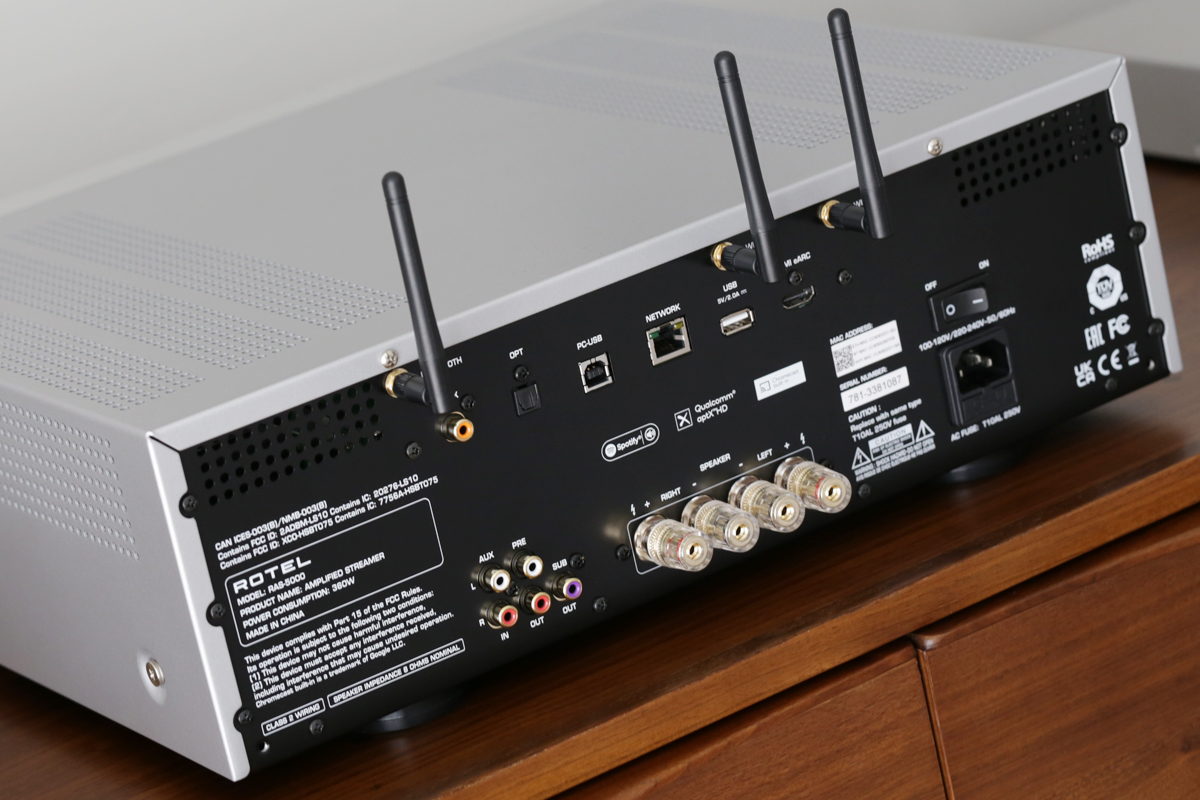
Also on the rear panel are four binding posts for the left and right speakers, Bluetooth and Wi-Fi antenna mounting screws, a master on-off switch, and a three-prong IEC power inlet.
Indicating its lifestyle focus, the RAS-5000 has a 2.5″H × 4.25″W color LCD screen in the center of its orderly front panel. That screen, which lacks touch capability, shows album art, track name, and resolution when playing music via ethernet, Wi-Fi, or USB. You can press the + button further to the right to view other metadata, such as artist and album name. The screen is also used for displaying the amplifier’s basic setup menus, whose functions include bass, treble, dimming, and control of network and software settings.
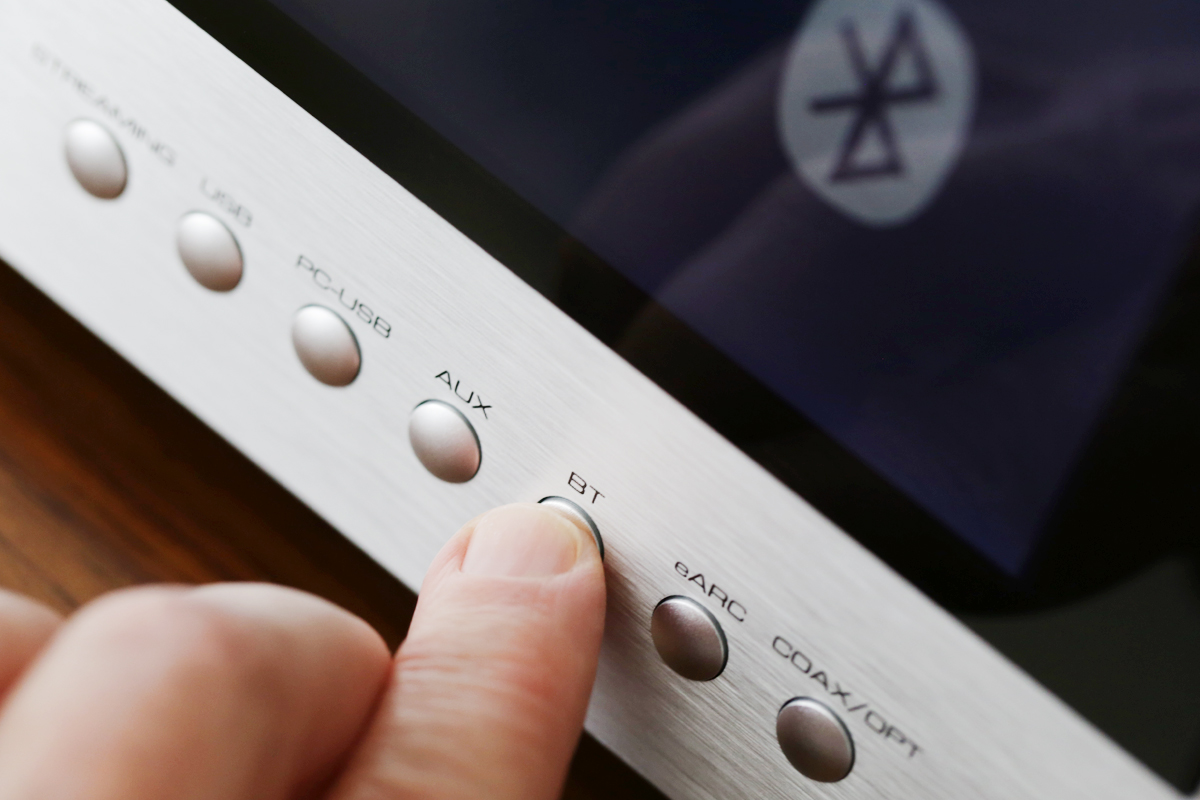
Below the LCD screen are seven buttons for source selection. Further to the left is a perimeter-lit power button, and below that, a 3.5mm headphone output jack. Below the volume control on the far right are four buttons that are used for menu navigation. Conspicuously absent from the front panel are buttons for skipping tracks, pausing and resuming playback, and muting volume. However, the included solid-feeling aluminum IR remote control has on-off, volume, mute, menu-navigation, source-selection, and play-pause functions, plus three preset keys that provide quick access to preprogrammed Spotify playlists.
Setup and software
I placed the RAS-5000 atop my Quadraspire SV3T rack and connected it with a Pangea AC-9 power cable to my dedicated 20-amp circuit. My listening trials were performed using my Focal Electra 1008 Be standmount speakers and Dynaudio Confidence C2 Signature tower loudspeakers. I also listened through my Grado SR325e headphones.
The RAS-5000 comes with a poster-sized Quick Installation Guide, plus a USB thumb drive that contains a PDF file of the full manual. The installation poster also has a QR code for downloading the manual.
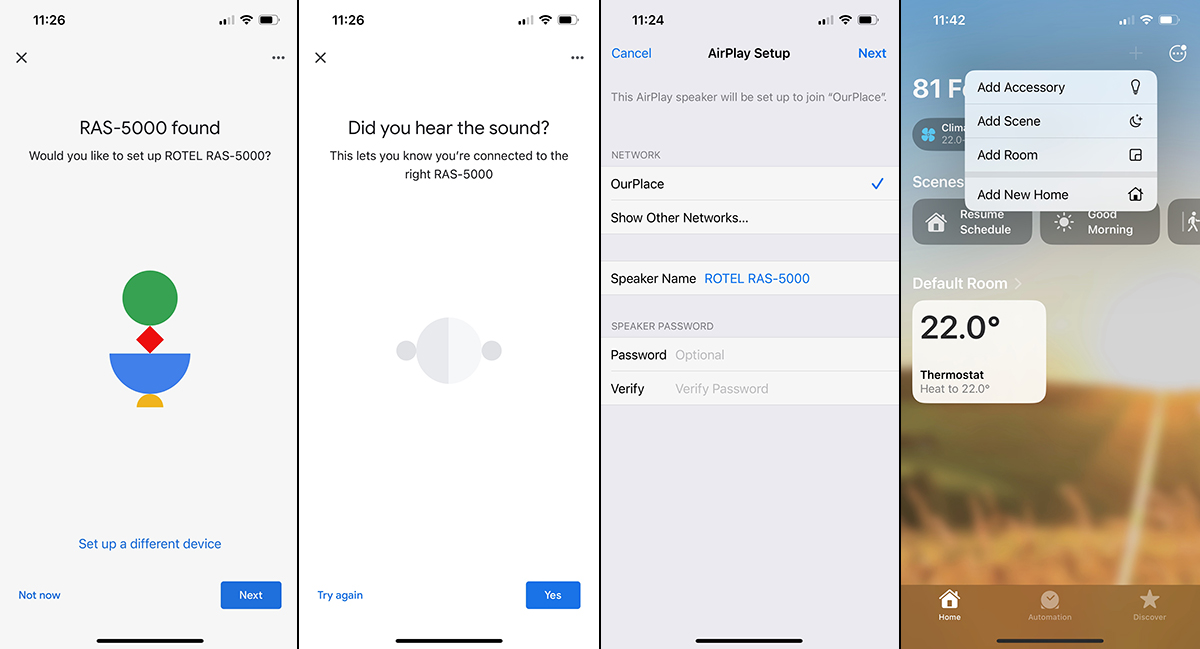
Android users who want to use Wi-Fi to connect the RAS-5000 to their home network can do so using the “Set up device” function in the Google Home app. iOS users can also use Google Home to connect the RAS-5000 to Wi-Fi. Or they can set the unit up as an AirPlay speaker in iOS’s Wi-Fi settings menu, or add the RAS-5000 as an accessory in the Apple Home app. I tried all these methods and they worked as expected. But for most of my listening, I used a wired ethernet connection between the RAS-5000 and my network router.
After setting up the RAS-5000, I downloaded the Rotel app to my iPhone 12 and my iPad (8th generation). I found the app rudimentary but easy to figure out. To choose the playback device, I tapped the little loudspeaker icon in the top-right corner and selected the RAS-5000. From there, I tapped the Qobuz icon and was able to sign in to my Qobuz account and begin streaming music. I found the Qobuz client in the Rotel app rather limited (Qobuz’s native app is much richer), but it worked fine during the review period—except for one bit of weirdness. When streaming with Qobuz through the Rotel app, I found that most 24/192 tracks would show up as 24/96 on the RAS-5000’s display. Another curiosity was that the LCD display indicated a resolution of 16/44.1 when playing some 24/96 tracks, for example R.E.M.’s “Everybody Hurts” from Automatic For The People (25th Anniversary Hi-Res Edition) (24-bit/96kHz FLAC, Craft Recordings / Qobuz), from the Qobuz app. I initially thought that the Rotel and Qobuz apps might be resampling data, but when informed of this issue, Rotel said the display was probably reporting resolution inaccurately.
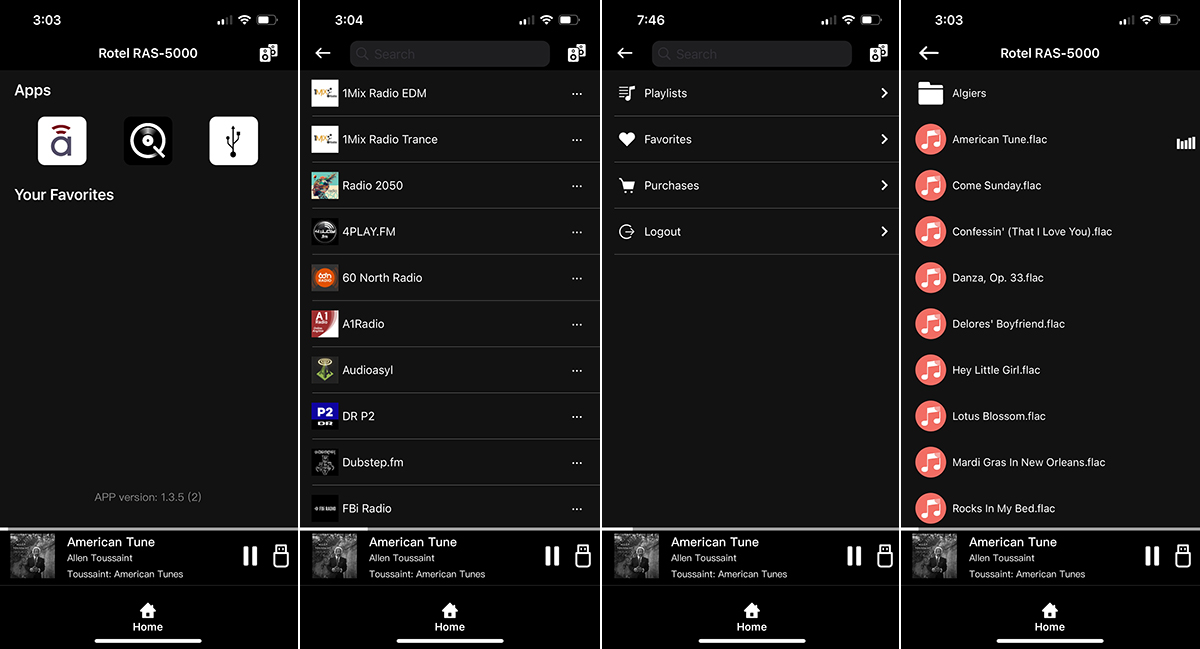
Streaming 24/96 and 24/192 files from the Tidal and Qobuz apps from my iPad via AirPlay 2, the amplifier’s display reported resolution of 24/48, which is now the highest resolution supported by AirPlay 2. When using Tidal Connect, the display showed album artwork and indicated playback resolution of 16/44.1, unless the selected track was an MQA file; in that case playback on the RAS-5000 showed the full resolution, up to 24/192, with the MQA icon, as on the title track from Miles Davis’s Tutu (24/192 MQA, Rhino-Warner / Tidal). Weirdly, when I streamed via Chromecast, the display showed track metadata and resolution, but no artwork.
The web radio feature worked fine. However, when playing files on an attached USB drive, the app sorted tracks by file name, rather than track number, so that tracks played out of order.
During my time with the RAS-5000, I did try its Bluetooth feature, streaming music directly from the Qobuz and Tidal apps. The amplifier’s display indicated 16/44.1 resolution, even when playing native 24/96 music, and that it was using the AAC codec. This was as expected. iOS devices resample all streams to 16/44.1 for Bluetooth streaming, and they don’t support aptX or aptX HD—AAC is the highest-quality Bluetooth codec supported in the Apple world. There was no album artwork.
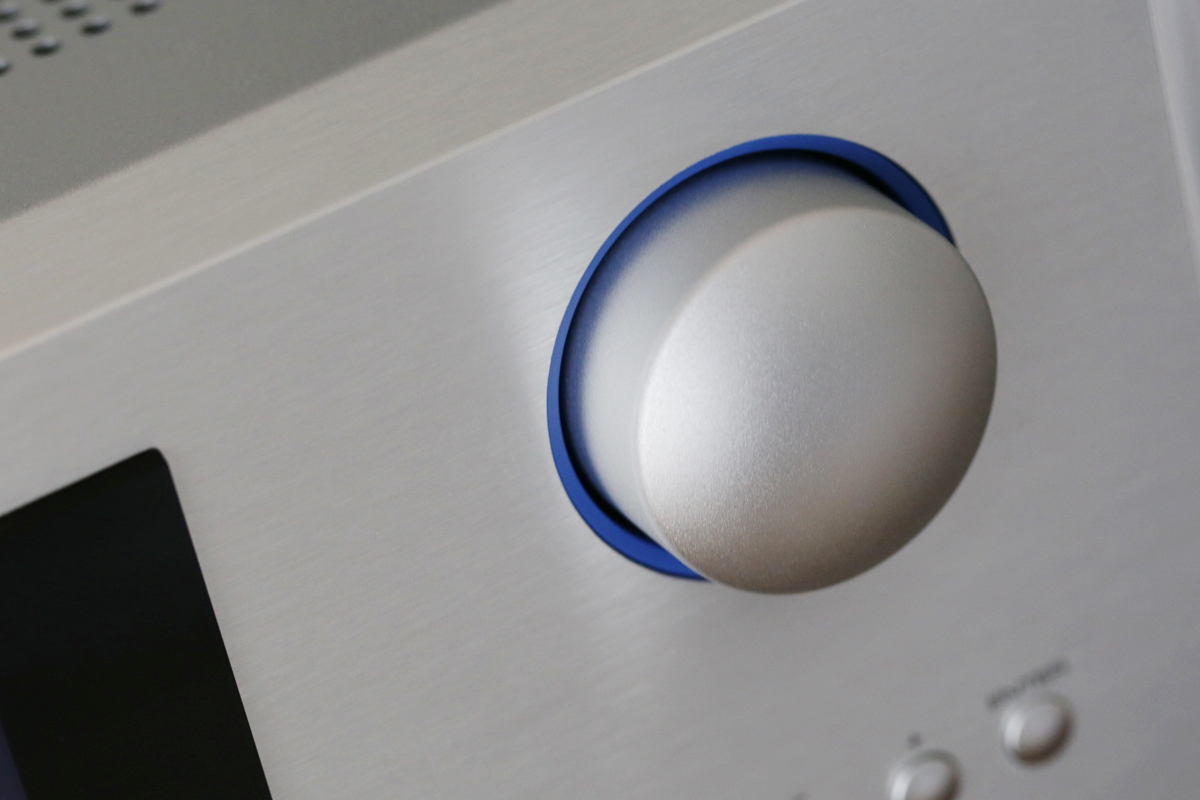
Streaming by AirPlay, Tidal Connect, and BT worked exactly as expected. In terms of sonic performance, I’d rank BT lowest, which is no surprise, since Bluetooth employs lossy compression. Still, it was more than good enough for casual listening. Tidal Connect was clearly a step up in performance, delivering more lively, more detailed sound, with better imaging. Regardless of the streaming protocol I was using, whenever I paused playback while streaming, artwork and metadata disappeared from the front-panel screen.
In terms of sound quality and ease of use, my most satisfying experiences came when I streamed from Roon. Kevro International, the Canadian distributor for Rotel, also distributes Roon Nucleus hardware in Canada. For this review, Kevro lent me a Roon Nucleus server. You don’t need a Nucleus to run Roon; you can run Roon Server on a Mac, Windows PC, or Linux box. For most of my listening, I streamed to the RAS-5000 via Roon.
This was my first experience using Roon, and I found it revelatory. I loved the straightforward interface and the way Roon provided abundant information on the music I was listening to. And because Roon stores your playback history, it’s easy to come back to a piece you heard earlier for another listen. With Roon handling music playback, the sound was not only impeccably detailed and nuanced, but there was also a general sense of ease and naturalness, together with a perceived improvement in spatiality.
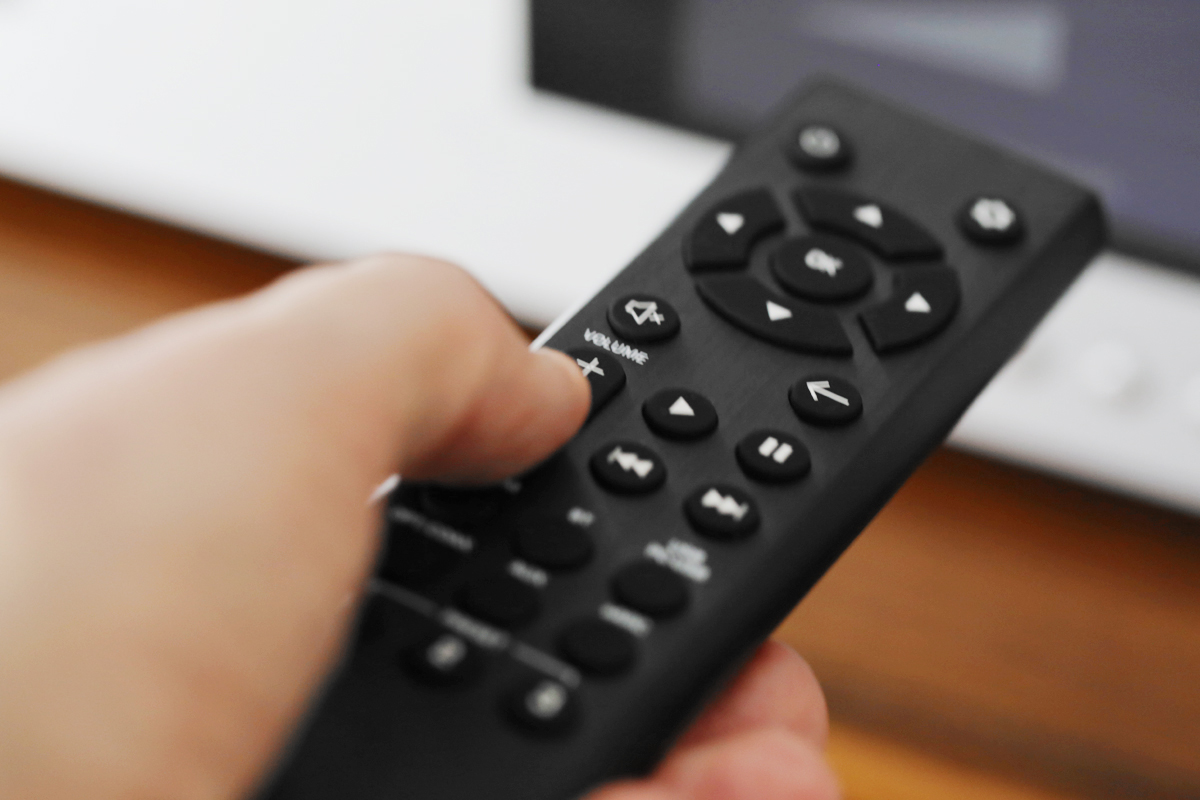
Before I move on to my listening experience, I should mention that I also successfully connected the RAS-5000’s HDMI eARC port to my RCA 58″ HDTV. Once I’d set the TV to output PCM rather than bitstream audio, the front display on the RAS-5000 showed it was receiving 16/48 PCM audio. I did not do any critical listening from video sources, but based on the qualities of clarity and accuracy I experienced, I’m confident that once paired with a suitable subwoofer, the RAS-5000 could serve as the hub of a very competitive 2.1-channel home-theater setup.
Listening
From my first listen, I had a good sense of the RAS-5000’s sonic character. The sound was balanced from top to bottom. Along with a general sense of tonal neutrality, there was a slight lean-forward sense to the presentation, driven by an incisive delivery of sonic elements within an open soundstage. The RAS-5000 provided a sense of drive and excitement to the music, with a nicely extended top end, insightful midrange, and bass that was both textured and controlled.
In the opening to “What Are You Doing the Rest of Your Life?” from Chris Botti’s 2005 album To Love Again (16/44.1 FLAC, Columbia Records / Tidal), the wispy character of the brushes circling across the skin of the drums was distinctive, as was the sharp tinkle of the bell chime. There was a sandy quality to the shaker, the RAS-5000 clearly conveying the movement of the pellets. Botti is a fantastic horn player, and through the RAS-5000 the brilliance and brassiness of the trumpet was laid bare, delivered with a high level of energy and spirit. The RAS-5000 relayed Sting’s unmistakeable vocal timbre with great clarity, each consonant and breath evident and centered on a well-sorted soundstage. The sense of recording space allowed my speakers to disappear and pulled me into the soundscape.
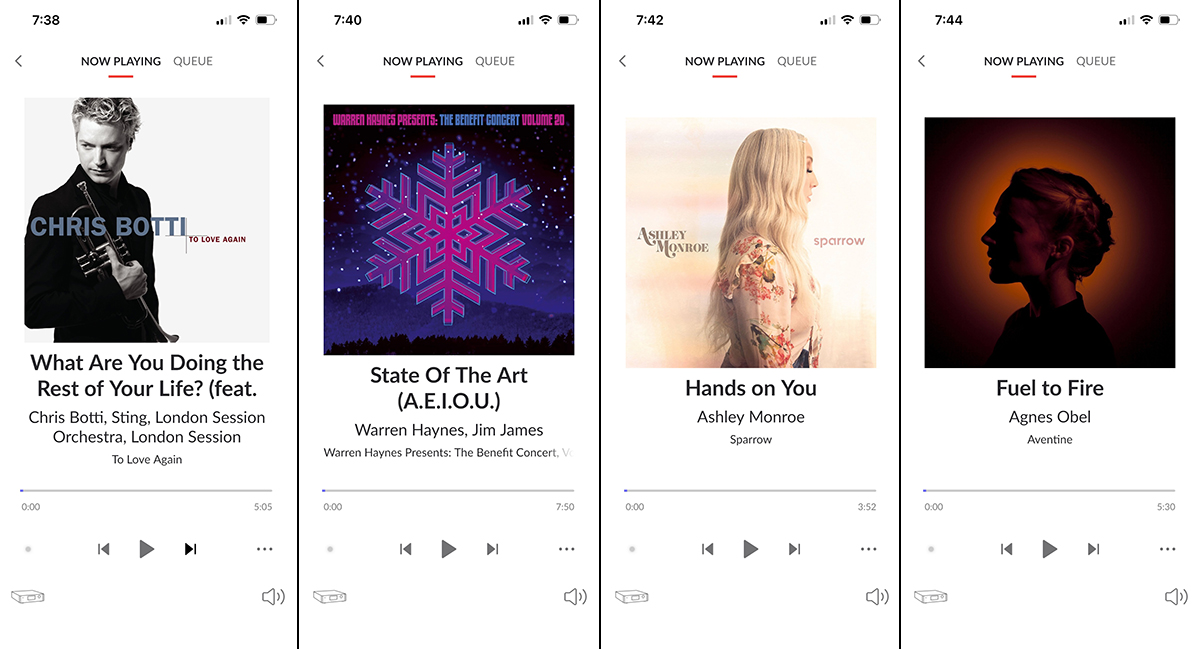
A track that I recently discovered is the Jim James song “State Of The Art (A.E.I.O.U.),” performed by Warren Haynes on the album Warren Haynes Presents: The Benefit Concert Volume 20 (16/44.1 FLAC, Provogue Records / Qobuz). The ethereal vocal was hauntingly delivered by the RAS-5000 within a large and open soundscape that completely enveloped my room. The drums possessed a dense and concussive quality—the hits conveyed the dynamic punch, while the cymbals sounded crisp, defined, and intrinsically metallic. The RAS-5000 also was able to deliver the distortion and reverb of the electric guitars in an undiluted manner, bringing a sense of momentum to the performance.
Ashley Monroe’s “Hands on You” from her contemporary country album Sparrow (24/96 FLAC, Warner/Tidal) is deliciously sultry . . . if not downright sexy. The bass line and drums carry this track along like a steam locomotive on a Texas railway. Through the RAS-5000, the bass sounded full, tight, and textured, accompanied by the heavy thud of the kick-drum hits. The bass frequencies exuded a wonderful balance of grip and body that had me feeling the music as much as I was hearing it. Monroe’s sultry voice was portrayed with a vividness that put her in the room with me. The electric guitar off to the right was clear and distinct, and the dynamic contrasts between the string plucks were precisely portrayed by the Rotel RAS-5000.
Comparisons
To get a sense of the RAS-5000’s DAC, I hooked up my Rega Apollo CD player to the amplifier’s analog and coaxial S/PDIF inputs. That way, I could easily compare the Rotel’s ESS Sabre–based DAC with the Apollo’s highly regarded DAC section, which is based on a Wolfson chipset.
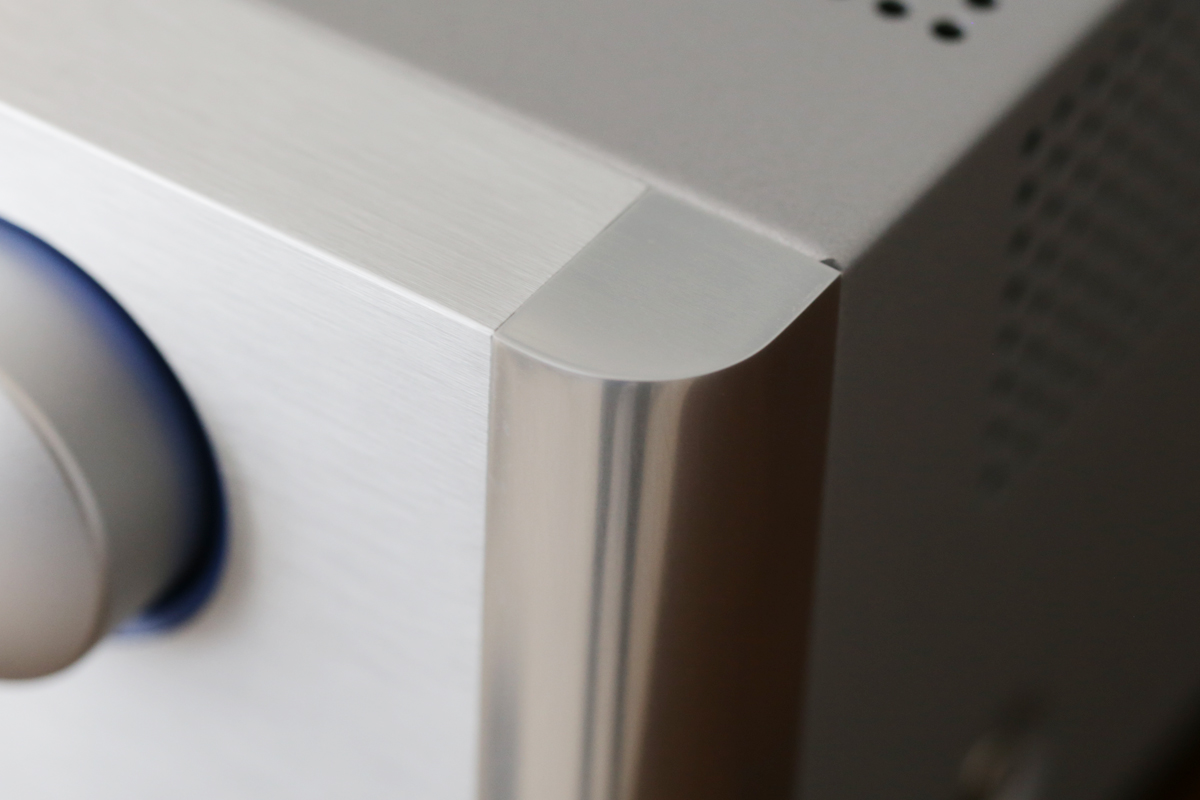
I selected the Rotel’s coaxial input so that I was hearing its internal DAC, plunked Peter Gabriel’s 1990 CD compilation Shaking the Tree: Sixteen Golden Greats (Geffen 24326) into the Rega player, and cued up “Red Rain.” The opening cymbal play was crisp and clear and followed by tight and defined percussion notes. The growl of the bass guitar was nothing less than engaging, with the overall track sounding quick and light-footed. Gabriel’s voice was chiseled, his phrasing very apparent. Switching to the auxiliary input so that I was employing the Apollo DAC, the cymbals took on a less forward presentation, softer in the mix, yet more feathery. The bass guitar was fuller, and Gabriel’s voice possessed a somewhat more lifelike quality with more space around the notes, all within a larger soundstage.
Next, I cued up a high-rez stream of Shaking the Tree in Roon (24/96 FLAC, Real World / Tidal) and played “Red Rain” again. This high-rez version sounded better than the CD. There was more detail, greater harmonic nuance within an even larger soundstage, combined with better dynamics. The Rotel RAS-5000 is obviously transparent and therefore deserves the best source you can give it.
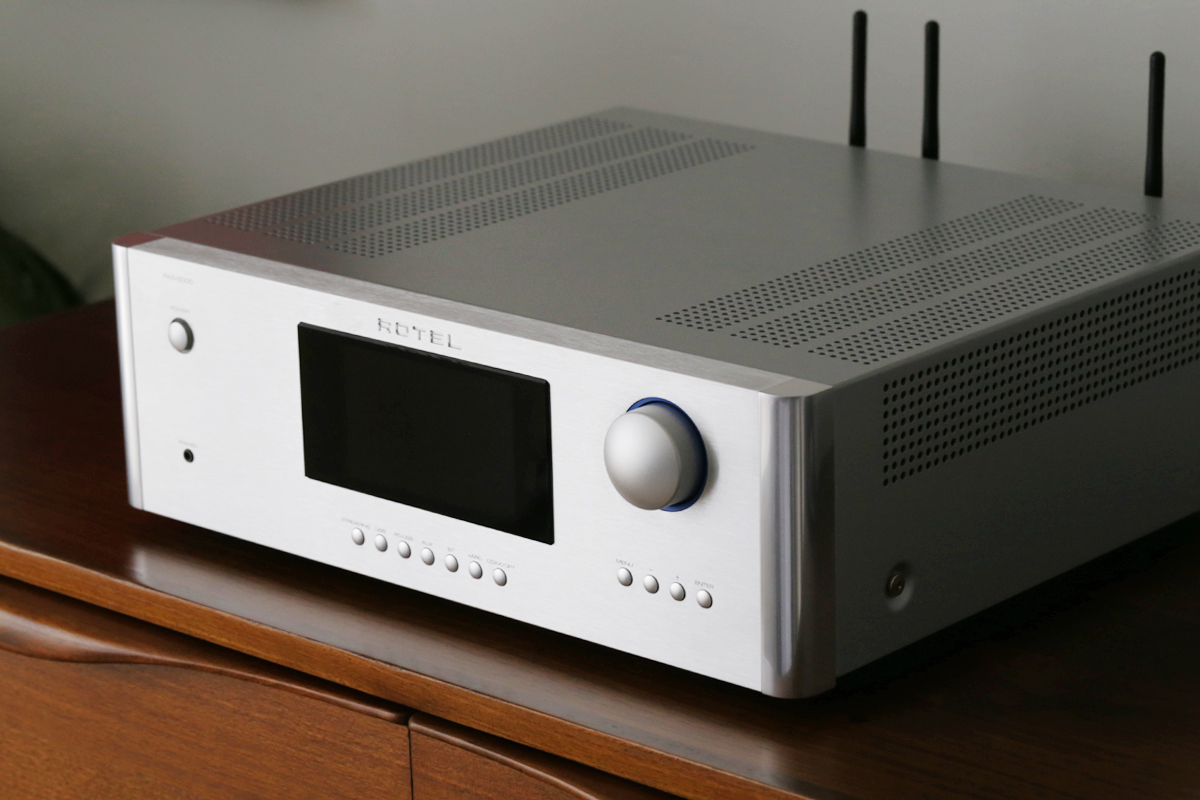
My Rega Elex-R Mk. 3 integrated amplifier is about half the price and has half the rated output power of the Rotel RAS-5000. However, as the Elex-R is a dedicated analog integrated design, with no DAC and no streamer, and is an acclaimed performer, I thought it would be a source of insight. I first matched volume levels using my sound-pressure meter, with the Rega Apollo CD Player as a common analog source. I found the Elex-R delivered a larger soundstage with more obvious layering of elements, and provided more harmonic complexity, with more varied instrumental timbre. The Elex-R was also somewhat fuller in the bass, without compromising articulation, and overall provided a warmer presentation. On the other hand, the Rotel RAS-5000 sounded more incisive. The soundstage was more open, with images having more space and definition, combined with a comparatively cooler presentation. The Rotel sounded nimbler, lighter on its feet. The leading edges of treble notes were more pronounced. The RAS-5000 possessed a greater sense of transient speed and contrast, whereas the Elex-R seemed more about dynamic weight.
Headphone listening
My Bryston BR-20 streaming DAC-preamplifier incorporates a purpose-built headphone amplifier, so I decided to compare it with the Rotel RAS-5000’s headphone output, using my Grado SR325e headphones. On “Fuel to Fire” by Agnes Obel from her album Aventine (24/48 FLAC, Play It Again Sam / Qobuz), I found that the Rotel headphone output was very capable. Elements sounded detailed, especially noticeable on the vocals but also in the fine textures of the bow across the strings. Images seemed to be primarily on one plane. However, with vocals there was a greater sense of intimacy, almost as if Agnes was singing directly into my ear. In comparison, the BR-20 produced a more expansive headspace, with more separation between the various elements, including greater delineation between the initial piano note and its decay. The presentation was more relaxed through the BR-20 and though the level of detail was comparable to the Rotel RAS-5000, there was more harmonic color and complexity in the presentation of the BR-20. Given that the BR-20 is much more expensive than the RAS-5000, and that the BR-20 is a streaming preamp while the RAS-5000 is a streaming integrated amplifier, I’d say the Rotel did well.
Conclusion
I experienced a few software blips during my time with the Rotel RAS-5000, but none of them was anywhere close to being a deal-breaker. My conclusion is that the RAS-5000 is a successful combination of streamer, DAC, and integrated amplifier. The fact that it offers so many options for connectivity and delivers so much sonic performance should make it appealing to anyone seeking a single-box, high-performing solution. Making the RAS-5000 even more attractive is its HDMI eARC connectivity, allowing it to also serve as a home-theater hub. Combined with a contemporary design aesthetic, its clean, detailed, and dynamic sound gives the Rotel RAS-5000 a lot of street appeal. If that is not enough, the fact that the RAS-5000 is Roon Ready and the level of user engagement can be ramped up with a Roon subscription might just allow the Rotel RAS-5000 to make many a music lover’s essentials list this spring.
. . . George de Sa
Associated Equipment
- Loudspeakers: Focal Electra 1008 Be, Dynaudio Confidence C2 Signature.
- Rack: Quadraspire SV3T.
- Sources and control devices: Apple iPhone 12 and Apple iPad (8th generation) running Tidal and Qobuz apps, Roon Nucleus server.
- Display: RCA RWOSU5847 58″ 4K UHD TV.
- Power cable: Pangea AC-9.
- Integrated amplifier: Rega Elex-R Mk 3.
- CD player: Rega Apollo.
- Headphones: Grado SR325e.
- Network: Netgear wireless modem.
Rotel RAS-5000 Streaming Integrated Amplifier
Price: $2999.99.
Warranty: Five years, parts and labor.
Rotel
Tachikawa Building 1F
2-11-4, Nakane, Meguro-ku
Tokyo, Japan 152-0031
Email:
Website: www.rotel.com
US distributor:
Fine Sounds Americas
11763 95th Ave N
Maple Grove MN 55369
Phone: (510) 843-4500
Email:
Website: www.finesounds.com
Canadian distributor:
Kevro International Inc.
902 McKay Road, Unit #4
Pickering, ON L1W 3X8
Phone: (905) 428-2800
Website: www.kevro.com



